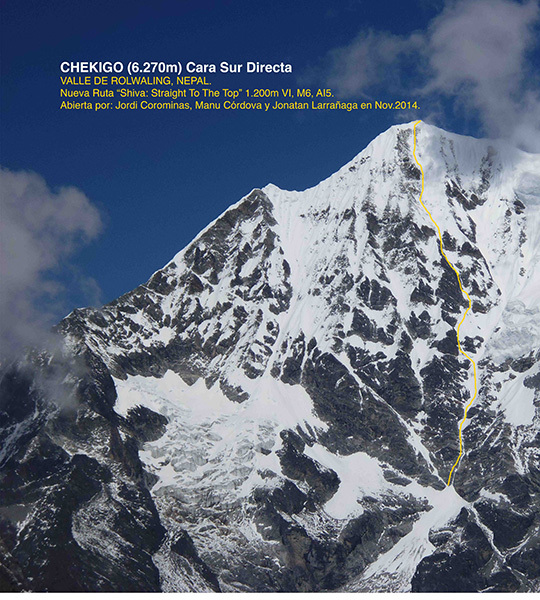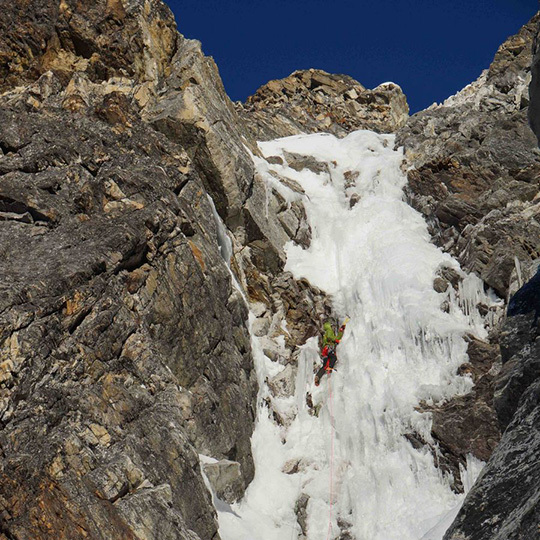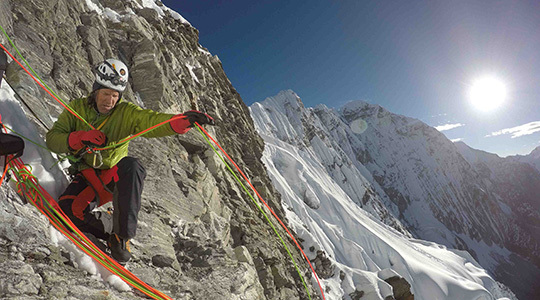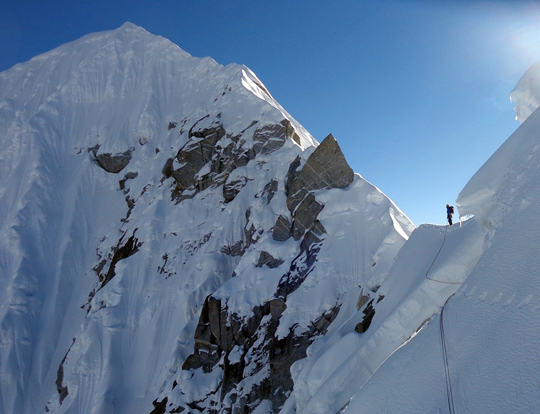
Located near the border of Tibet, the Rolwaling Himal of eastern Nepal has drawn climbing teams in pursuit of new routes and first ascents of its abundant 6000m summits for decades. Even now, the region remains uncrowded by climbers. This autumn, several teams converged on the region to climb new routes in alpine style.
Slovenian Domen Kastelic and American Sam Hennessey arrived in the valley in late September, aiming to make the first ascent of Chukyima Go (aka Chugimago; ca. 6258m). They acclimated, waited for their weather window and then began climbing the west face of the peak on November 11. After a full day of climbing, they bivied and reached the summit the following morning. To descend, they reversed their route. The 900-meter Kastelic-Hennessey reaches difficulties of M4 90 degrees.
Though a 1952 ascent of Chukyima Go has previously been reported, Lindsay Griffin of the British Mountaineering Council (BMC) suspects that team instead ascended Peak 5794m. “While Chugimago’s location makes it likely to have received one or more unauthorized ascents, none appear to have been reported, giving Kastelic and Hennessey the first official, if not the first absolute, ascent,” Griffin writes.
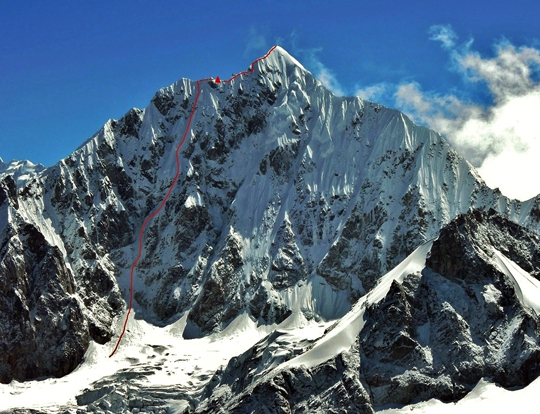
In October, Spanish climbers Oriol Baro and Paula Alegre ascended a sub-peak (ca. 5950m) west of the main summit of Chukyima. They named their route Infleti, a 700m climb rated MD- (French TD), after Baro’s swelling face, a sign of the edema he suffered on their ascent. Baro reported to desnivel.com that the route began on rock, but consisted mostly of snow, ice and mixed climbing. They followed the line of least resistance to descend and made five rappels. On October 31, they then attempted a 1200m line up the taller Chekigo (6257m), but retreated several hundred meters from the summit, Baro reported.
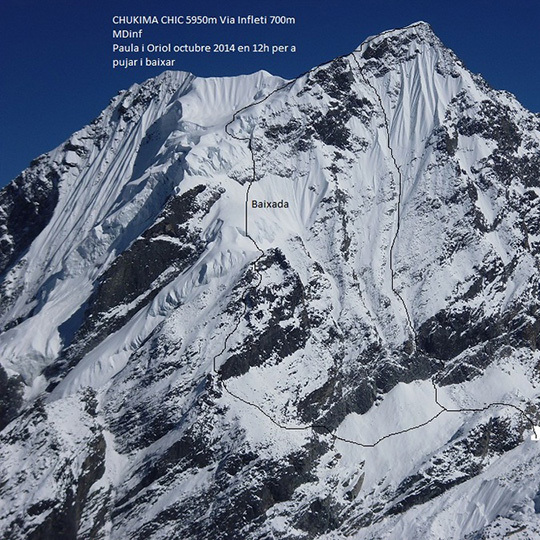
In November, after repeating Infleti to acclimate, Manu Cordova, Jordi Corominas and Jonatan Larranaga reached the summit of Chekigo by following a more direct path than had Baro and Alegre. The first half of their route passes under a large hanging serac. Cordova described the route, Shiva: Straight to the Top, as having several distinct cruxes. The first was poorly protected M5, the second and the third consisted of difficult alpine ice. Above 6000 meters, sustained M6 terrain brought the climbers to a final 300 meters of inconsistent sugar snow along a ridge. Here the team had to swim through the snow, careful not to fall off either side, to reach the summit. In approximately 22 hours they completed their 1200m route, rated AI5 M6. Cordova described the climbing as aesthetic, comparing it in quality to Grandes Jorasses but at a much higher altitude.
“We are fortunate to be able to climb a mountain whose ascents can be counted with the fingers on one hand,” he told desnivel.com.
[Additional reporting contributed by Joe Robinson.–Ed.]
desnivel.com (Kastelic-Hennessey), desnivel.com (Infleti), desnivel.com (Shiva)
